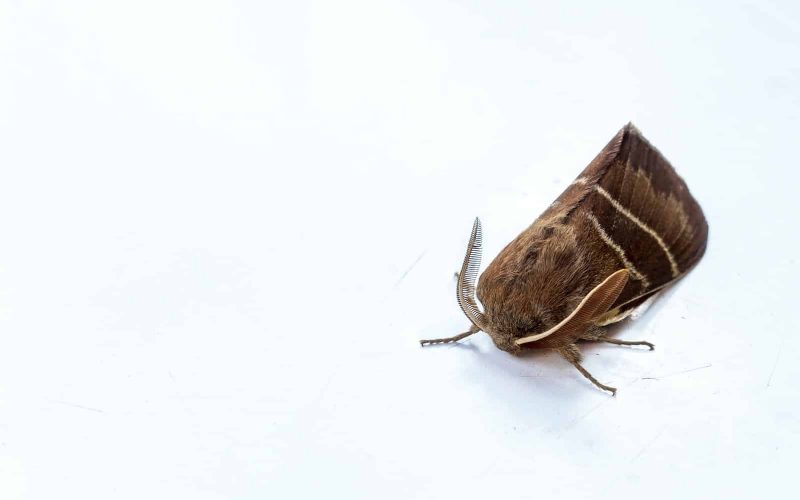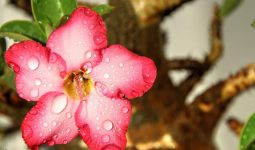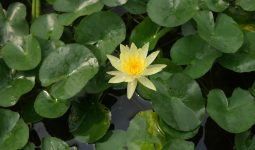Insects have many different types, and a wide range consumes wood. This article will discuss the different types of insects that eat wood.
Almost all buildings in the world use wood, both for structural purposes and interior furniture.
As a result, wood is one of the most important materials in the world, and insects that eat wood are among the most destructive pests on the planet.
However, not all wood-eating insects are pests, but some can cause serious damage.
If you’re dealing with wood insects at home and wondering how to identify the one disturbing you, you’re at the right place.
However, remember that wood-eating insects are more than just pests; they also serve important ecological functions.
They are vital to the well-being of the habitats they inhabit.
1. Carpenter Ant

Carpenter ants are included on this list because they chew wood, even though this isn’t their primary food source.
They chew it up instead and spit it out. Why? Because they reside in rotting, old, or dying logs and trees.
Their nests are made up of huge wood galleries joined by tunnels. Carpenter ants consume honeydew, a substance produced by aphids.
Furthermore, they nurture these aphids to ensure they always have a supply of honeydew. They provide them with food, shelter from predators, and habitat inside their nests.
2. Termite

Among the different types of insects that eat wood are termites. Termites have been around since the Jurassic period and are undoubtedly the first wood-eating insect most people think of.
These little insects are found on all continents except Antarctica. Like ants and bees, termites are social and live in colonies with distinct workers, soldier castes, and a queen.
In contrast to ants and bees, termites also have kings – mature males who mate with their queens and do not pass away immediately after that, as ant and bee drones do.
In reality, termites are more closely linked to cockroaches than other social insects.
Although not all termites consume wood, a large percentage of them do, and these termites are found worldwide.
The only people who consume and digest cellulose are the workers who feed the troops, the king and queen, and the children.
3. Carpenter Bee

Carpenter bees are also among the different types of insects that eat wood.
There are about 500 species of carpenter bees that can be found worldwide. Most of them live alone rather than in large hives.
Like carpenter ants, they chew through wood to construct their nests rather than eat it for food.
They create a single entrance that branches into numerous tunnels, leading to the cells where they lay their eggs and raise their larvae.
Carpenter bees resemble bumblebees in appearance; they have big, fluffy bodies and are calm, rarely stinging unless provoked severely.
Males are harmless since they lack a stinger. They primarily eat pollen and nectar, just like other bees do.
4. Horntail Wasp
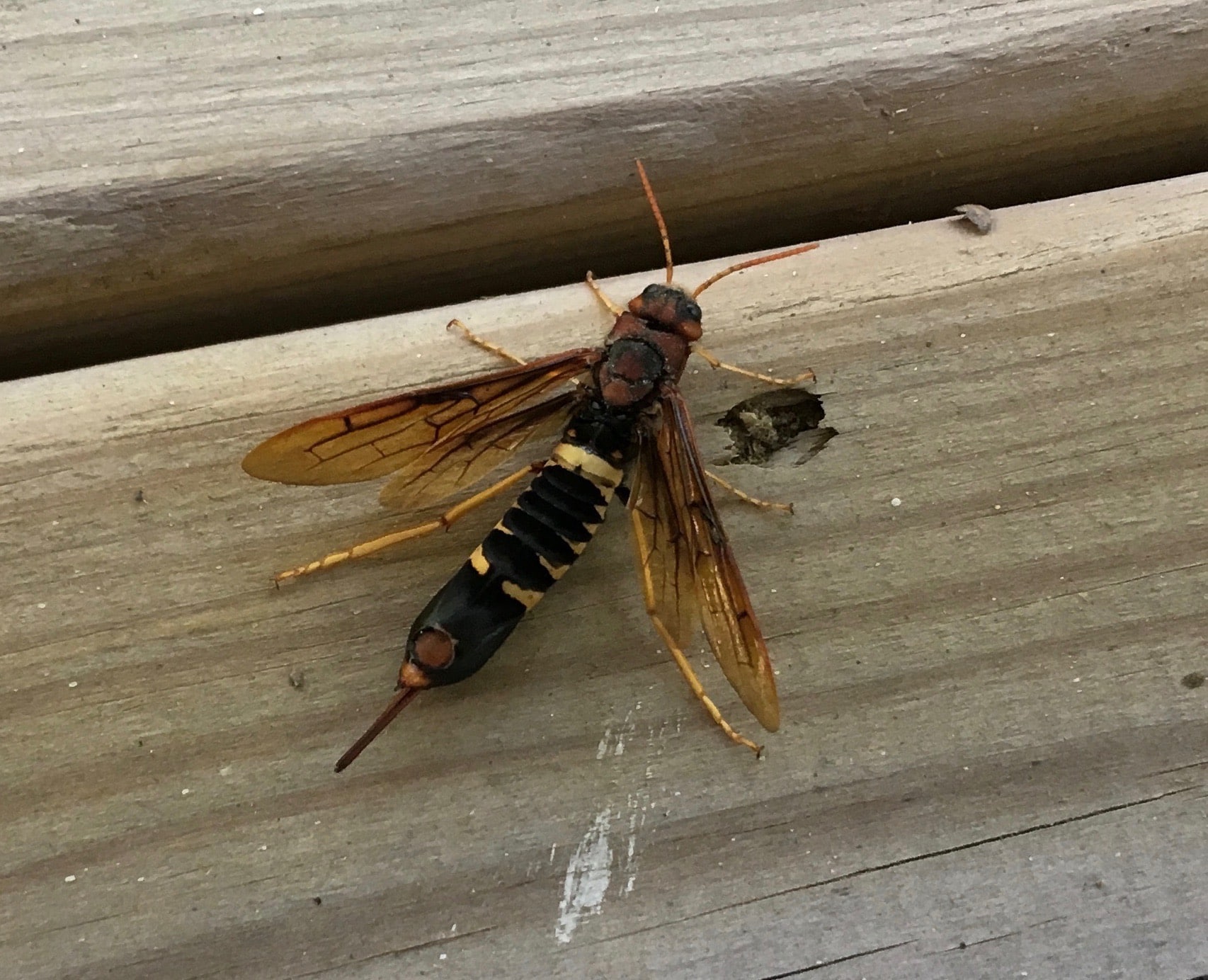
A group of solitary wasp species known as horntails, wood wasps, or horntail wasps can be recognized by the large, spike-like bump on the end of their abdomen.
They’re also among the different types of insects that eat wood. When the adult eggs hatch, the larvae burrow deep into the trees to lay their eggs.
They’ll spend two or three years living inside the tree. Surprisingly, these larvae do not consume the wood they bore through.
They consume a fungus instead, which they deposit with their eggs in the wood.
The fungus feeds the larvae as it grows and develops alongside them. They bore back toward the surface just beneath their bark just before they reach adulthood.
They build their pupa here, develop into adult wasps, and then tunnel the remaining distance out.
5. Powderpost Beetle
There are 70 different species of powderpost beetles, and some of them can be very bothersome.
Their larvae bore into wood, leaving a unique powder mound resembling sawdust outside their holes.
The wood’s starch content is what keeps the larvae alive as they grow and mature for months or years, depending on the species.
The infestation is not visible for some species until the adults have re-bored their way out of the wood. Suppose a powderpost beetle infestation remains unchecked for a long enough period.
In that case, the larvae can quickly turn the interior of the wood into nothing more than powder, damaging the structural integrity.
6. Weevil
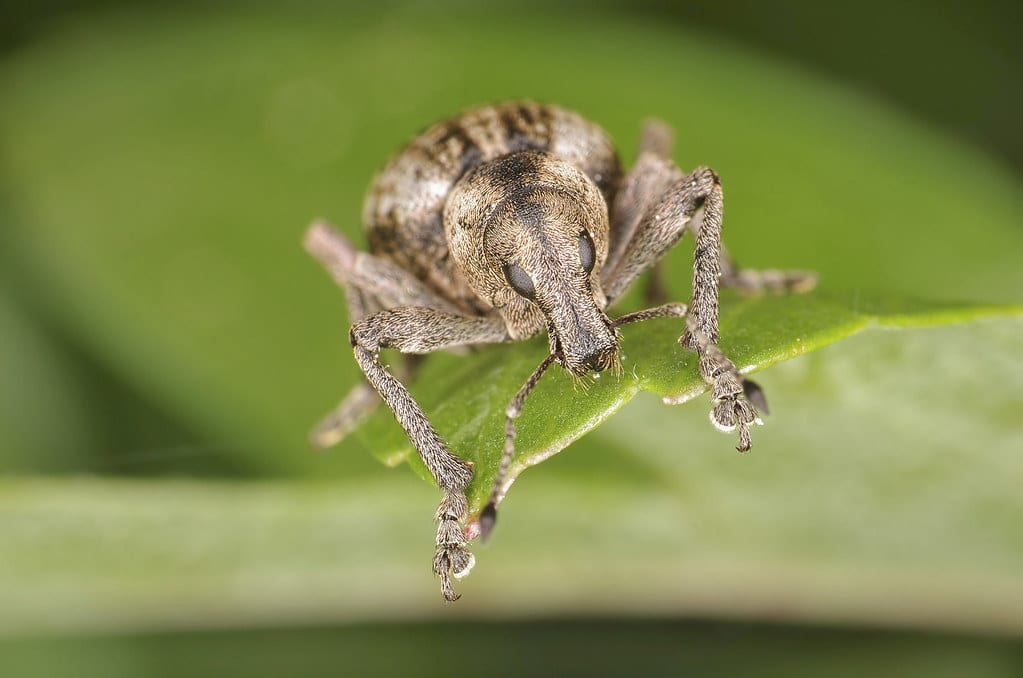
Weevils are also among the different types of insects that eat wood. You can identify them by their distinctive long, narrow snouts.
Weevils come in over 97,000 different species, not all of which consume wood.
Many of these are notorious agricultural pests that may destroy entire harvests, such as the maize weevil and the boll weevil.
Furthermore, the wood-boring weevil only consumes wood. But unlike the majority of weevils and every other bug on this list, it doesn’t threaten people.
This is because, although it consumes wood, it only consumes wood that a fungus has already predigested.
In other words, it consumes rotting wood, preventing infestation of buildings or furniture.
7. Old House Borer
The old house borer is native to Europe but has spread to many other parts of the world due to the trade in wood and wood products. It is a pest of softwood sapwood.
Rather than infesting older timber in buildings, it is often seen in new dwellings and infests younger wood.
The life cycle can last up to ten years, depending on environmental factors and the nutrient content of the wood, which declines with age.
The use of timber that already has eggs or larvae causes the majority of infestations in homes. They feed on the wood, primarily near the surface, until they reach adulthood.
The larvae can grow to a length of 2.5 cm, which is longer than many wood-boring larvae, creating larger exit holes.
8. Moth

These insects are also among the different types of insects that eat wood.
Some members of the Xyloryctidae and Sesiidae family of clearwing moth larvae are significant wood-boring pests in ornamental and timber trees.
There are more than 1300 different Sesiidae species, many of which resemble wasps and hornets in appearance and behavior.
The females lay their eggs in cracks in the bark or other areas of broken bark. When the eggs hatch, the larvae burrow into the tree’s bark and sapwood.
They mostly target trees that are already under stress or damaged, such as from injury or drought.
In the US, clear-wing moths attack various fruit trees and alder, ash, birch, fir, oak, pine, poplar, sycamore, and pine.
9. Wharf Borer
This is also among the different types of insects that eat wood.
The wharf borer has been discovered in many temperate nations, including the UK, Australia, New Zealand, France, Japan, and all US states, except for Florida.
The beetle can be found on docks, harbors, jetties, along rivers, and in coastal areas everywhere there is damp decaying wood.
Their eggs hatch approximately 5 to 11 days after the females lay them on the decayed wood.
The larvae tunnel into the wood after digging a hole about 1 cm below the surface to eat.
Furthermore, the larval stage can last between two months and two years, depending on the circumstances.
The adults last a few days before mating and moving to a different location to lay eggs since they do not eat.
Finally, the wharf borer is a “secondary pest” since it feeds on already-rotten wood, but its tunnels can weaken it.
10. False Powderpost Beetle
The false powderpost beetles attack several softwoods and hardwoods. The insects are usually in tropical wood and bamboo, traded internationally.
Also, the beetles frequently infest hardwood objects such as flooring, paneling, furniture, and other items.
The females bore a “gallery” into the wood to place their eggs in pores or cracks rather than on its surface.
They can be distinguished from other forms of wood borer because the larvae of this group fill their tunnels with coarse, grit-like frass.
11. Bark Beetle
This beetle now considered a specialized section of the weevil family, is also among the different insects that eat wood.
Bark beetles can be a problem for agricultural and forestry tree crops and for logs that are being transported or stored.
They introduce fungi that damage the wood, killing the tree or causing rot in logs that have been kept.
The US Forest Service has also noted 53 invasive species that are suspected of having been brought in through international trade in the US.
Bark beetles are crucial in recycling weaker and dying trees in natural forests and developing habitats for other insects and fungi.
They also significantly contribute to creating regions where new trees can regrow, resulting in a more diverse forest environment.
However, in forests with huge concentrations of a single species, certain species go into epidemics that kill trees in large areas.
Furthermore, this significantly raises the chance of fire, which is what occurred in California in September 2015 and is considered to have been caused by bark beetles increasing mortality in trees already under stress from the prolonged drought.
12. Common Furniture Beetle
The common furniture beetles are also among the different types of insects that eat wood.
The sapwood of hardwood and conifer trees is the only part of the trees that the furniture beetle infests.
It wreaks havoc on structural timbers and joinery more than it does on furniture. The females lay their eggs inside old exit holes or in surface fissures in wood.
Within a few weeks, the eggs become larvae that bore into the wood. The larvae develop over three to four years while consuming the wood.
Also, adults create an exit hole of 1-1.5 mm in diameter after pupating close to the wood’s surface.
The appearance of wood dust surrounding holes indicates an active infection.
Since the larval stage lasts several years, an infestation may be active during this time, even if there is no visible evidence.
The type of wood, temperature, and humidity affect how quickly the larvae develop into an adult.
13. Deathwatch Beetle
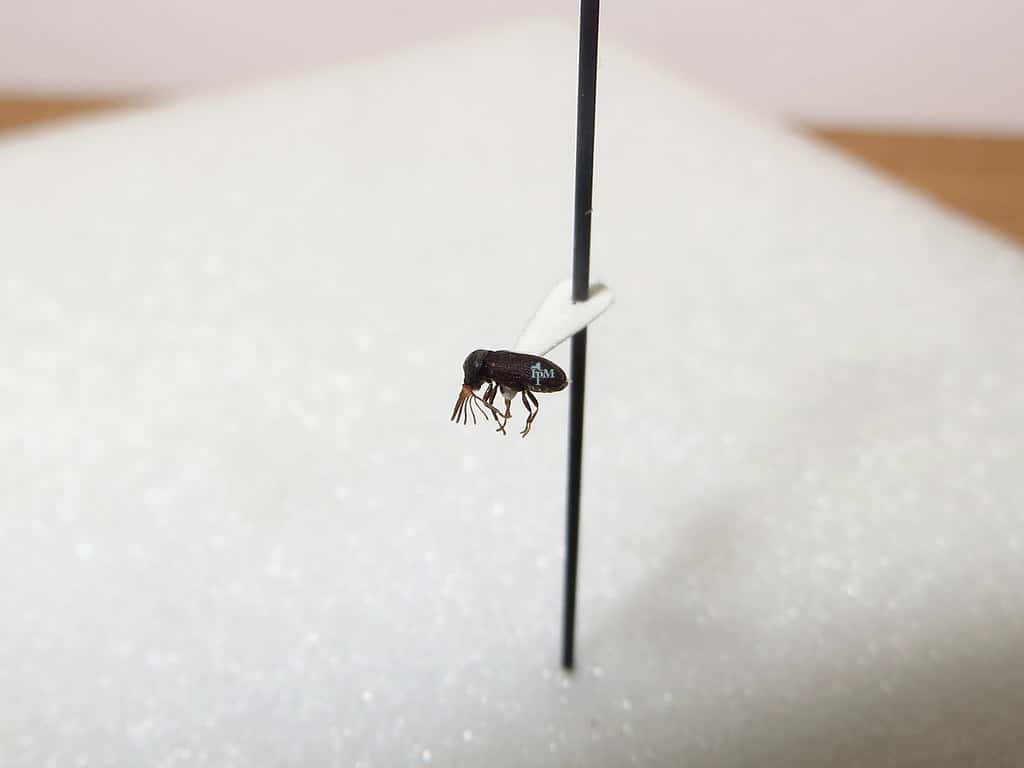
Among the different types of insects that eat wood is the deathwatch beetle. These beetles got their name from their habit of tapping on wood to attract a mate at night.
In European folklore, this behavior was compared to that of the “grim reaper,” who would tap on his scythe to warn of impending death.
Deathwatch beetles often infest damp, partially rotted softwood lumber with a moisture level of over 14%.
They are more likely to be discovered in moist structures or portions of buildings that have poor drainage or water leaks.
You’re not likely to find them in low-moisture structures with central heating.
The beetle larvae line their tunnels with slightly gritty frass that is not as coarse as that of false powderpost beetles.
The exit holes might vary in size, although they are bigger than powderpost beetle holes.
14. Longhorn Beetle
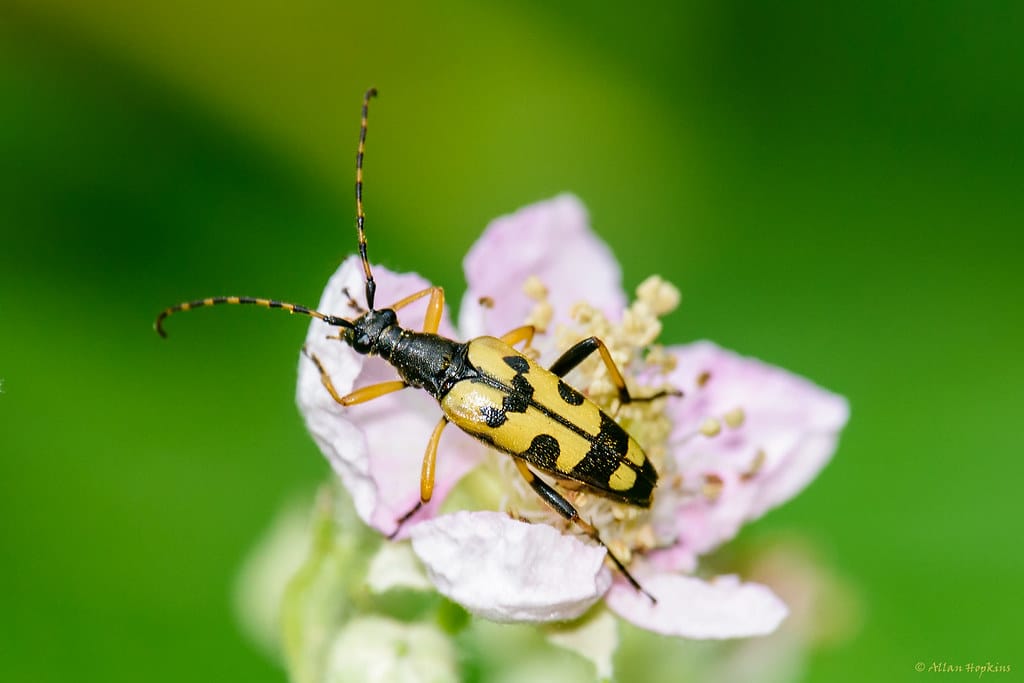
Last on this list of the different types of insects that eat wood is the longhorn beetle.
Both the Asian and citrus longhorn beetles are native to East Asia, but they have been brought to other parts of the world, most especially Europe and North America.
In China, the Asian longhorn beetle destroys hardwood trees in plantations and along roadsides, and it is increasingly a problem in the US and Europe.
To lay eggs, the adult female Asian longhorn beetle chews a small pit in the bark.
The citrus longhorn larvae feed in the lower portion of the tree’s vascular system, whereas the Asian longhorn larvae feed in the higher trunk and branches.
Conclusion
We hope this article has given you more insight into the different types of insects that eat wood.
These insects can cause serious damage in urban environments.
However, some wood-boring insects play an essential role in the ecosystem, helping to recycle dead trees. Thanks for reading!




